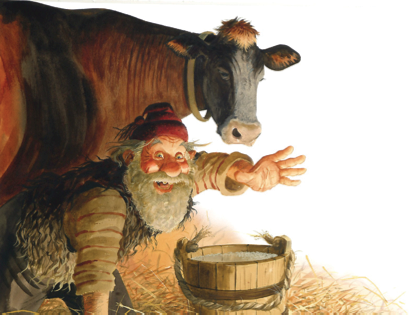Video of Mr Gabriel's Art Studio with Artist Elias Shumway
By Megan J. Hansen at meganjhansen.blogspot.com
By Megan J. Hansen at meganjhansen.blogspot.com
Certainly, the lone writer shack or art studio is a place where ideas can only emerge in solitude. Yet, undoubtedly part of the creative process in any artist, whether it be in an art studio, kitchen, laboratory, or concert hall, is connected with a community--a band of people who spark new fires of creativity. What would have occurred within the burgeoning Impressionist movement if Monet, Renoir, Cezanne, Pizzaro, and others would not have gathered to meet in a Paris cafe for several years? With their collaboration of creativity in the early days of their careers, they fielded off their own self depreciating judgements and critics of the day. Those connections and friendships made all the difference to what would become the artistic movement of Impressionism.
This last year has been one of increased creative collaboration in our home, as we welcomed two teenage girls who asked to live with us so they could further their own beginning careers. And with them, others came too. We have been a group of musicians, artists, videographers, and writers. The result has been remarkable in the shaping of all of us--not only the enhancement of our own creativity, but how others can go to new levels around us. I have noticed, with new awareness, how my own words and encouragement can dramatically affect those at my elbow. Others lift my own sense of what I can do or be. There is no hint of competition, all the debris of the world roll away. The genuine desire to see other's creativity awaken is just as important as your own progress.
Although I could be a mother to all of them, we have worked together to form a creative community from India, Ukraine, the US, and France. All of us have not only tried to heighten our own creative paths, but to ignite support for one another's ideas. Also, each of them has helped me to navigate with my son who has autism, and launch him in new artistic directions. Although creative endeavors obviously require the rigor of solo work, I believe creativity also needs the humanistic glaze, so to speak, to finish it off. Others enliven our work. They elevate us to places we could not rise to without them.
Creative bonding is infectious and exhilarating. To see people who want to bring others along who are straggling, maybe even languishing, such as my son with autism, has moved me deeply. With that sense of enthusiasm for all things creative, you begin to see the potential of others' gifts too--people with seeming limitations. As we all teamed up to talk and brainstorm about my son's art work, ideas flooded the room on how to help him improve and develop as an artist. As a mom, I felt that I was not the lone voice to advocate for him, but there were others to lean on. We all became excited to launch him and his efforts. Now we have been asked to help create a special art barn this summer where we can celebrate creativity. The ideas just keep flowing....
 |
| A year ago when Elias had his artwork exhibited here in Doha at the Arab Museum of Modern Art. Blogpost of Our Picasso's Art Exhibition |
Creativity, whether it be individually or in a group, requires forgoing some time off the screen or away from other concerns. But it also means entering into another place of nirvana and epiphanies where ideas are shaped--on the canvas, in a musical composition, or in a poem. In our fast paced, multi-tasked society, creative pursuits are often times neglected or postponed. There is room for all of us to cultivate our creative souls a little more. And with some collaboration of others, the joy can be unimaginable. It can change a life, even a young man with autism.
The ripples of our efforts to create and help others will only cause swelling waves--in the big ocean we all live in.



























